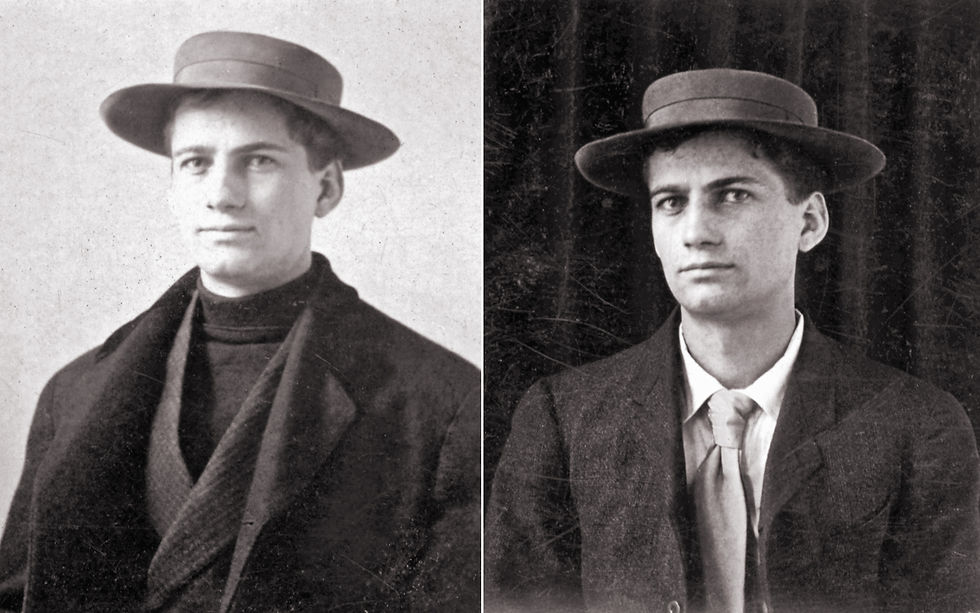Julius John Lankes: Yankee Printmaker in Virginia
- Heritage Film Project

- Jul 22
- 3 min read
In J.J. Lankes: Yankee Printmaker in Virginia, Eduardo Montes-Bradley traces the life and legacy of Julius John Lankes, a printmaker whose woodcuts evoke an enduring vision of rural America. Filmed over the course of two years beginning in 2017, the documentary sets out not only to uncover the life of an artist but to understand the tensions—industrial versus agrarian, communal versus individual, modern versus traditional—that shaped both his work and his times.

Born in 1884 in Buffalo, New York, Lankes came of age in a rapidly transforming America. His German immigrant family lived at the edge of the industrial boom, and his early training as a draftsman placed him in the service of mechanical invention and manufacturing. Yet from the start, Lankes was drawn to something quieter and more permanent: hand-carved images that resisted the machinery of modernity. His first woodcut, made with a borrowed engraving tool on applewood, marked the beginning of a long and prolific career rooted in the aesthetics and ethics of manual labor.
Though he would ultimately carve over 1,300 woodcuts, Lankes’s vision was not forged in isolation. The film carefully reconstructs his relationships with major literary and artistic figures, most notably Robert Frost. Their friendship—born from shared values and a shared love of the American landscape—produced over a hundred images that now serve as visual counterparts to Frost’s poetry. In many ways, Lankes’s woodcuts and Frost’s verse reflect one another: both artists sought to preserve a vanishing agrarian life, and both were wary of industrial encroachment.

The documentary also explores Lankes’s connection with other influential figures such as Sherwood Anderson and Rockwell Kent. With Anderson, Lankes collaborated on a series of essays that reflected on the promise and fragility of rural life, while his professional dealings with Kent—who shared his early political leanings—speak to the vibrant but contested terrain of leftist thought in early 20th-century America. Lankes briefly contributed to Communist publications and expressed solidarity with workers’ causes, but like many of his contemporaries, he grew disillusioned with collectivism and eventually embraced a fiercely individualistic path.
Julius John Lankes: Yankee Printmaker in Virginia
The story takes a turn when Lankes relocates to Hilton Village, Virginia. There, the northern idealist found himself in the midst of the conservative South, among remnants of Confederate nostalgia and Jim Crow segregation. Yet the setting allowed him to continue chronicling life untouched by industry. His images of Virginia’s backroads, farms, and towns capture a region suspended in time, where the values he cherished still seemed to hold sway.

Throughout the film, Montes-Bradley weaves personal archival materials, interviews, and on-location filming with understated sensitivity. We see Lankes’s legacy not only through his prints but also through the memories of scholars, collectors, and descendants who help reconstruct the arc of his life—from Buffalo to Europe, from Vermont to Virginia.
As the film progresses, it also becomes clear that Lankes’s journey mirrors that of many American artists who came of age between the world wars: caught between progressive idealism and political disillusionment, between craftsmanship and the mechanization of art, between personal conviction and public suspicion. His final years at the National Advisory Committee for Aeronautics (the precursor to NASA) suggest a quiet compromise. The artist who once sought to carve an American identity in wood returned, late in life, to the role of government draftsman—only to be later dismissed, perhaps due to lingering associations with his earlier political sympathies.


One of the film’s most poignant moments recounts Robert Frost’s final visit to Lankes, then bedridden after a stroke. The two friends exchanged a simple, bitterly humorous greeting—“Goddamn it all”—a phrase that perhaps encapsulates a shared resignation, a life’s worth of frustrations and beauty distilled into five syllables.
J.J. Lankes: Yankee Printmaker in Virginia is more than a biography. It is a meditation on the relationship between image and word, place and identity, labor and art. Without resorting to hagiography, the film allows viewers to appreciate Lankes’s contributions to American visual culture while also understanding the contradictions he lived with. As we follow his footsteps—from Frost’s hayloft in Vermont to Anderson’s cottage in Appalachia, from Weimar Germany to the Virginia tidewater—we come to see the contours of a uniquely American life, one carved with care, conviction, and clarity.









Comments